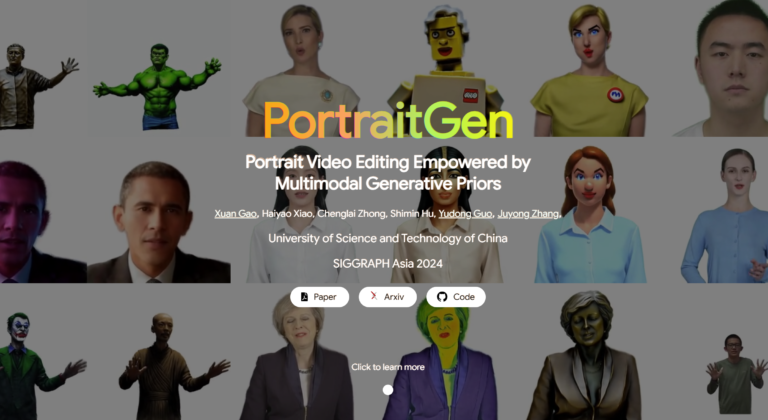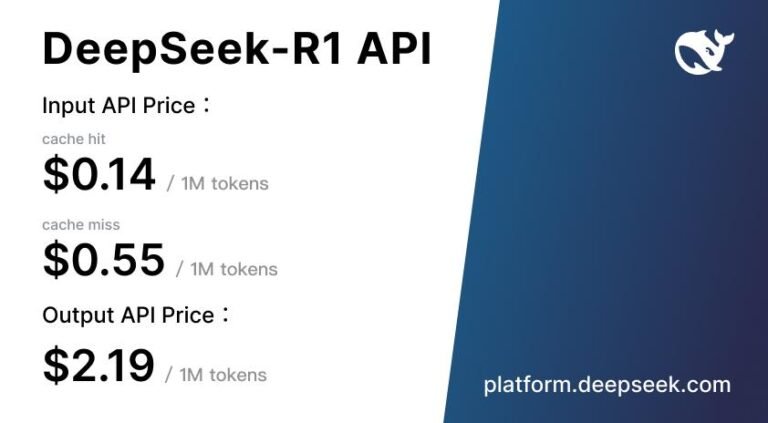인공지능(AI) 산업은 빠르게 변화하고 진화하고 있습니다. 우리는 가능하다고 생각했던 것의 경계를 넓히는 놀라운 발전과 혁신적인 제품을 목격합니다.
이번 주에 우리는 다양한 산업에 혁명을 일으키고 개인 생산성을 향상시킬 인상적이고 최첨단 제품을 선보였습니다.
OpenAI가 공식적으로 ChatGPT 웹 검색을 출시했습니다.
OpenAI가 공식적으로 출시했습니다. ChatGPT 웹 검색 이 기능을 사용하면 관련 웹 링크로 검색 결과를 빠르고 실시간으로 검색할 수 있습니다. 이 기능을 사용하기 위해 다른 웹 확장 프로그램이나 앱을 사용할 필요가 더 이상 없습니다.
모든 검색 답변에는 출처 인용도 포함됩니다. ChatGPT는 또한 검색 쿼리에 맥락을 통합하여 보다 심층적인 답변을 제공합니다.
또한 Chrome 브라우저 확장 프로그램을 다운로드하면 ChatGPT를 기본 검색 엔진으로 설정할 수 있습니다. 이렇게 하면 빠르고 직접 사용할 수 있습니다!
사용 방법 ChatGPT 웹 검색 ChatGPT Plus 구독자가 아닌 경우 기능
OpenAI는 ChatGPT Search가 ChatGPT Plus 및 Team 사용자에게만 접근 가능하며, 즉시 사용할 수 있다고 발표했습니다. 유료 사용자는 잠시 기다릴 필요가 없습니다.
하지만 OpenAI는 앞으로 몇 달 동안 무료 사용자에게 액세스를 제공할 계획입니다.
출시를 기다리다: 유료 구독자가 아니라면 OpenAI가 무료 사용자에게도 기능을 확대할 때까지 기다려야 합니다. 이는 앞으로 몇 달 안에 이루어질 것으로 예상됩니다.
대기자 명단에 가입하세요: 가능하다면 OpenAI가 ChatGPT 검색과 같은 기능에 대한 조기 액세스를 위해 제공하는 대기자 명단에 가입하는 것을 고려하세요.
정기적으로 확인하세요: 무료 사용자에게 검색 기능이 제공되는 시기와 관련된 OpenAI의 공지 사항을 주시하세요.
ChatGPT는 웹 검색 결과의 정확성을 어떻게 보장하나요?
ChatGPT는 여러 가지 방법을 통해 검색 결과의 정확성을 보장합니다.
실시간 데이터 검색: 검색 엔진을 통해 최신 정보에 접근하고, 평판이 좋은 출처에서 콘텐츠를 수집하여 인용합니다.
선택 기준: ChatGPT는 사용자 질의에 맞춰 관련성 있고 권위 있고 최신 소스를 우선시합니다.
검색 정제: 초기 결과가 부족한 경우 관련성을 개선하기 위해 쿼리를 세분화합니다.
사용자 피드백: 시간이 지남에 따라 응답을 개선하기 위해 사용자의 수정 사항을 기반으로 적응합니다.
HeyGen은 디지털 인간을 만드는 새로운 기능을 출시했습니다.
HeyGen은 사용자가 촬영하지 않고 사진만 사용하여 디지털 인간을 만들 수 있는 새로운 기능을 출시했습니다.
본인의 사진을 업로드하거나 텍스트 프롬프트를 입력하여 가상 캐릭터 이미지를 생성할 수 있으며, 이를 사용하여 본인의 AI 비디오 디지털 아바타를 훈련할 수 있습니다.
캐릭터의 참조 이미지를 많이 업로드할수록 생성된 이미지의 얼굴 특징의 일관성이 더욱 높아집니다.
이러한 디지털 인간은 자연스러운 신체 움직임을 가지고 있으며, 옷과 포즈를 사용자 정의할 수 있고, 배경을 바꿀 수 있으며, 성별, 나이, 민족을 선택할 수 있습니다.
대본을 편집하고, 다양한 목소리와 감정 표현을 선택하고, 짧은 시간 안에 빠르게 영상을 생성할 수 있습니다.
Suno가 Personas를 출시했습니다.
수노 페르소나라는 새로운 기능을 출시했습니다.
이 기능을 사용하면 사용자는 보컬, 스타일, 분위기 등 노래의 핵심적인 특징을 저장한 후 이를 새로운 창작물에 재사용할 수 있습니다.
이 기능은 당신의 독특한 음악 스타일을 유지하는 데 도움이 되도록 설계되었습니다.
페르소나를 만드는 방법: 좋아하는 노래를 선택하고 "만들기"를 클릭한 다음 페르소나를 만듭니다. 가사와 스타일 추가: 사용자는 일반적인 창작물과 마찬가지로 가사와 스타일을 추가할 수 있습니다.
공개 및 비공개 설정: 페르소나를 공개 또는 비공개로 설정할 수 있습니다. 공개 페르소나는 자체 페이지를 가지며, 다른 사용자가 사용할 수 있으며, 라이브러리와 개인 프로필에 표시됩니다.
GitHub은 GitHub Copilot에 더 많은 AI 모델을 도입했습니다.
GitHub은 개발자의 옵션과 사용자 정의 기능을 향상시키기 위해 GitHub Copilot에 더 많은 AI 모델을 도입한다고 발표했습니다.
새로운 모델은 다음과 같습니다.
클로드 3.5 소네트
제미니 1.5 프로
o1-미리보기 및 o1-미니
GitHub은 또한 자연어로만 애플리케이션을 구축할 수 있는 도구인 GitHub Spark를 출시했습니다.
서버나 데이터베이스 구성 등의 복잡한 배포 기술을 알 필요가 없습니다.
GitHub Spark는 클라우드 설정 및 리소스 할당을 모두 백그라운드에서 자동으로 완료하므로 초보자도 자연어로만 웹 애플리케이션을 만들 수 있습니다.
즉, "무엇을 하고 싶은가"만 말하면 기능적인 앱을 제공해 대화처럼 간단한 과정을 거치게 됩니다.
Stability AI는 Stable Diffusion 3.5 Medium 모델을 출시했습니다.
상업적 및 비상업적 사용자 모두에게 무료로 제공됩니다. 25억 개의 매개변수 모델을 갖추고 있으며, 소비자 하드웨어를 위해 특별히 설계되었습니다.
이 모델은 9.9GB의 VRAM만 필요합니다. 소비자용 하드웨어가 있는 대부분의 표준 그래픽 카드에서 실행할 수 있습니다.
이 제품은 다양한 해상도에서 고품질 이미지를 생성할 수 있어 다른 중간 크기 모델보다 더 뛰어난 결과를 도출합니다.
Stability AI 분석에 따르면, Stable Diffusion 3.5 Large는 즉각적인 적응성 측면에서 시장을 선도하고 이미지 품질 측면에서 훨씬 더 큰 모델과 경쟁합니다.
Stable Diffusion 3.5를 어떻게 사용하나요?
로컬 사용을 위한 설치 단계
이제 Stable Diffusion 3.5 Large 및 Stable Diffusion 3.5 Large Turbo 모델을 다음에서 다운로드할 수 있습니다. 껴안는 얼굴 그리고 추론 코드에 대해서 GitHub. 그런 다음 컴퓨터나 다른 하드웨어에서 실행할 수 있습니다.
컴퓨터에서 실행하기 전에 필수 구성 요소를 설정하고 필수 라이브러리를 설치해야 합니다.
필요한 Python 라이브러리를 설치하는 동안 Stable Diffusion을 로컬에서 실행할 수 있습니다.
온라인 접속
ComfyUI 사용하기
ComfyUI는 Stable Diffusion 3.5로 워크플로를 관리할 수 있는 사용자 친화적인 인터페이스를 제공합니다. 다양한 파일을 인터페이스로 끌어서 이미지 생성 작업을 쉽게 실행할 수 있습니다.
허깅 페이스 스페이스 사용
설치가 필요 없이 브라우저에서 직접 Stable Diffusion 모델을 실행하려면 Hugging Face Spaces를 방문하세요.
더 많은 사용자를 위해, 많은 앱과 웹사이트가 곧 이미지 생성을 위한 최신 Stable Diffusion 3.5 모델을 통합할 예정이니 업데이트를 기대하세요!
초경량 디지털 휴먼: 초경량 디지털 휴먼 모델은 모바일 폰에서 실행될 수 있습니다.
초경량-디지털-인간: 모바일 기기에서 실시간 작업을 지원하는 초경량 디지털 인간 모델입니다.
이 모델의 알고리즘은 저전력 장치에서도 원활하게 실행되도록 최적화되어 있습니다.
훈련을 완료하는 데 필요한 영상은 3~5분 정도입니다.
비디오의 모든 프레임에 사람의 얼굴이 완전히 노출되어 있고 소리가 잡음 없이 깨끗한지 확인하세요. 새 폴더에 넣으세요.
또한, 최적화된 데이터 흐름과 추론 프로세스를 통해 모델은 입력 데이터(예: 비디오 및 오디오)를 실시간으로 처리할 수 있으므로 즉각적인 디지털 인간의 응답이 가능합니다.
그만큼 AI 영상 플랫폼 D-ID 새로운 디지털 휴먼 툴 출시
AI 영상 플랫폼 D-ID가 두 가지 새로운 기능을 출시했습니다. 디지털 휴먼 도구—Express와 Premium+는 콘텐츠 제작을 위해 특별히 설계되었으며, 기업이 마케팅, 영업, 고객 지원 등의 분야에 더욱 사실적인 가상 인간을 적용할 수 있도록 하는 것을 목표로 합니다.
익스프레스 가상 인간은 단 1분의 비디오 훈련만으로 생성이 가능하며, 사용자의 머리 움직임과 동기화될 수 있습니다.
프리미엄+ 가상 인간은 더 긴 교육 비디오가 필요하지만 손과 몸통 움직임을 수행할 수 있어 더욱 현실적인 인간 상호 작용을 만들어냅니다.
이러한 도구를 사용하면 가상 인간 비디오를 보다 쉽게 제작하여 마케팅에 드는 비용을 줄이고 적용 범위를 확대할 수 있습니다.
구글 제미니 API, '검색 앵커링' 도입
Google은 Gemini API와 Google AI Studio에서 새로운 기능인 "Google 검색 앵커링"을 출시했습니다. 사용하기 매우 편리합니다.
이 기능은 Google 검색의 실시간 데이터를 활용하여 사용자에게 보다 정확하고 최신 정보를 제공하고, 지원 링크와 검색 제안을 제공하여 AI의 응답을 더욱 신뢰할 수 있게 만듭니다.
검색을 통해 얻은 최신 뉴스 데이터를 활용하면 잘못된 정보가 줄어듭니다.
실시간 검색을 통해 최신 정보를 가져와서 특정 검색 결과에 대해 더 나은 답변을 얻을 수 있습니다.
답변에는 정보 출처에 대한 링크가 포함되어 있어 사용자가 정보의 신뢰성을 쉽게 확인할 수 있습니다.
데스크톱용 클로드
인류학적 AI Claude 데스크톱 앱을 만들었습니다! 이제 Mac과 Windows에서 사용할 수 있습니다.
당신의 AI 어시스턴트클로드는 당신이 심도 있는 작업을 더욱 빠르고 창의적으로 수행할 수 있도록 도울 수 있습니다.
이제 어떤 기기에서든 클로드를 사용할 수 있고, 클로드와 대화할 수 있으며, 클로드가 질문에 대한 답을 찾도록 돕고 이미지의 내용을 분석할 수 있습니다.
클로드는 PDF의 차트와 그래프를 이해하는 법을 배웠습니다!
Anthropic은 Anthropic API에서 Claude PDF를 보내는 기능을 출시했습니다.
새로운 PDF 지원 베타를 사용하면 API 요청에 PDF를 직접 포함할 수 있습니다. 이제 연구 논문을 읽는 것이 더 쉬워졌습니다.
새로운 Claude 3.5 Sonnet 모델은 이제 PDF 입력을 지원하고 문서 내의 텍스트와 시각적 콘텐츠를 모두 이해합니다.
이 기능은 기능 미리보기에서 체험해 볼 수 있습니다.
PDF 내용에 대해 구체적으로 질문하면 클로드가 이미지 판독 기능을 바탕으로 질문에 답변해 드립니다.
PDF 지원은 어떻게 작동하나요?
- 시스템은 PDF의 각 페이지를 이미지로 변환합니다.
- 시스템은 텍스트와 이미지를 분석하여 PDF에 대한 이해도를 높입니다.
- 다른 클로드 기능을 동시에 사용할 수 있습니다.
Claude에서 Visual PDF 기능을 사용하도록 설정하려면 어떻게 해야 합니까?
Claude에서 시각적 PDF 기능을 활성화하려면 다음 단계를 따르세요.
- 설정에 접근하세요:
클로드 인터페이스를 열고 플라스크 아이콘이나 설정 메뉴를 찾으세요. - 시각적 PDF 활성화:
플라스크 아이콘을 클릭하고 Visual PDF 옵션으로 이동하여 켭니다. 그러면 Claude가 PDF 문서 내의 이미지와 시각적 요소를 처리하고 해석할 수 있습니다. - PDF 업로드:
이 기능을 활성화하면 PDF 문서를 채팅 창으로 끌거나 업로드 버튼을 사용하여 업로드할 수 있습니다. 매우 쉽고 편리합니다. - 클로드와 상호 작용:
PDF 파일을 업로드한 후, PDF에 포함된 텍스트와 이미지에 대한 질문을 클로드에게 할 수 있으며, 복잡한 문서와의 상호 작용을 강화할 수 있습니다. 이를 통해 문서를 더 편리하게 읽고 효율성을 높일 수 있습니다!


